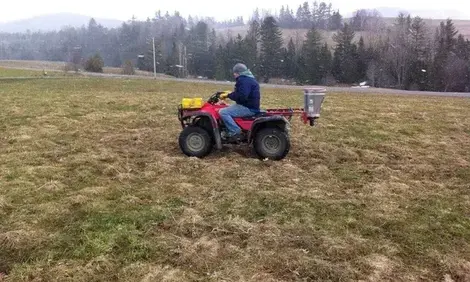



Bovine disease update: FMD, NWS and LSD
Foot and mouth disease, new world screwworm and lumpy skin disease continue to plague the cattle industryEditor's note: The following is an excerpt of a report by the World Organization for Animal Health: The State of the World’s Animal Health 20251
Foot and mouth disease
From January 2024 to May 2025, 46 countries reported a total of 6,895 foot and mouth disease (FMD) outbreaks to the World Animal Health Information System (WAHIS), including 32 exceptional epidemiological events. Notably, South Africa recorded the first occurrence of serotype SAT 3 in a zone, while China reported the first occurrence of serotype O in a zone. Additionally, new strains were detected in South Africa (SAT 1), Palestinian Autonomous Territories (O), and Comoros (SAT 1). A recurrence of the disease was also observed in 14 countries, including Germany, Hungary and Slovakia.
In January 2025, Germany confirmed an outbreak of FMD serotype O in buffaloes, marking the first outbreak in the country since 1988 and the first FMD outbreak in Europe since Bulgaria’s case in 2011. The disease was detected in three buffaloes on a free-range farm, triggering an extensive investigation. Authorities conducted testing on all cloven-hoofed animals within a 3 km and 10 km radius, and traced potential sources of infection, but no further positive cases were identified.
As of May 2025, 335 FMD outbreaks linked to 26 exceptional epidemiological events remained ongoing globally. Given that FMD serotypes do not provide cross-protection and even differ within serotypes, the World Organization for Animal Health (WOAH) underscores the importance of accurate strain identification. This is essential for effective vaccine development and informed global disease control strategies to mitigate the spread of new and re-emerging strains.
Proportion of outbreaks caused by each FMD serotype from 1 Jan 2024 to 1 April 2025:
O = 67%
SAT 3 = 11%
SAT 2 = 8%
SAT 1 – 8%
Untyped = 6%
New world screwworm
New world screwworm (Cochliomyia hominivorax) is an endemic disease in certain Caribbean and South American countries, with Chile being the only exception where it was last reported in 1947. The disease was eradicated in Central America in the early 2000s, the United States of America (USA) in the 1960s, and Mexico in the 1970s.
From January 2024 to May 2025, 16,725 outbreaks were reported to WAHIS by 19 countries, involving 15 exceptional epidemiological events. The disease was detected for the first time in Mexico in December 2024, while it reoccurred in Nicaragua, which accounted for over 60% of the reported outbreaks. Other affected countries included Belize, Costa Rica, El Salvador, Guatemala and Honduras.
As of the report’s publication, Costa Rica, Honduras, Panama and Nicaragua had resolved their events as stable in WAHIS. The remaining countries have periodically updated their events in WAHIS, with the exceptions of Guatemala which last updated its event in October 2024 and El Salvador (last update 14 December 2024), which means that their disease situation was unknown at the date of publication of this report.
The emergency response strategy in affected regions involved the production of sterile flies for aerial and ground release, along with surveillance and control of animal movements. Raising awareness among livestock producers and promoting good livestock practices are essential to control the spread of disease and prevent future incursions into North America.
Lumpy skin disease
From January 2024 to May 2025, 2,838 lumpy skin disease outbreaks were reported to WAHIS from 37 countries, including 10 exceptional epidemiological events. The disease was detected for the first time in northern Africa – with outbreaks reported in Algeria, Libya and Tunisia – and Japan. It also occurred in Eastern and Southern Asia. In Libya, outbreaks occurred between April 2023 and June 2024, and the event has since been resolved. However, in Algeria and Japan, outbreaks were reported from June 2024 and December 2024, respectively, with the event in Japan still ongoing at the time of publication. In areas where the disease had previously reoccurred, all outbreaks were resolved, except in the Republic of Korea and Cambodia. Notably, 80% of the reported events employed vaccination as a control strategy to combat the outbreaks.
Reference
1World Organization for Animal Health (2025). – The State of the World’s Animal Health 2025. Paris, 120pp. https://doi.org/10.20506/woah..... License: CC BY-SA 3.0 IGO.



